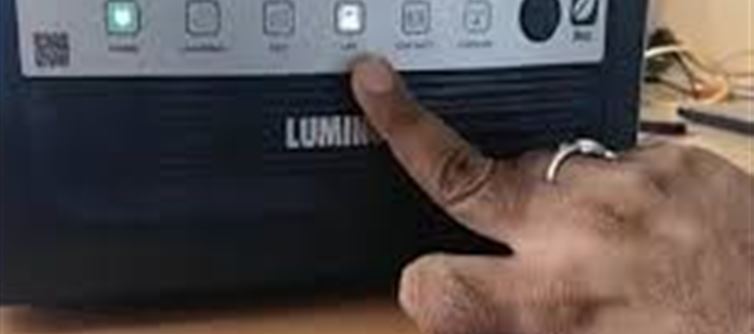
Inverters have become an essential appliance in almost every household, especially in areas with frequent power cuts. They keep our lights, fans, and appliances running smoothly. However, like any electrical device, inverters can sometimes pose safety risks if warning signs are ignored. One particular indicator light can signal a serious problem—if it turns on, immediate action is required.
1. The Danger Light You Should Never Ignore
Most modern inverters come with indicator lights to alert users about battery issues, overload, or internal faults. If the red warning light or “fault” light starts blinking or stays on, it could indicate a critical electrical issue. Ignoring it can lead to battery overheating, electrical short circuits, or even a blast in extreme cases.
2. Why This Happens
This warning light usually turns on due to:
· Overcharging of the battery
· Loose wiring or short circuits
· Faulty inverter components
· Old or degraded batteries
Any of these issues, if left unattended, can escalate quickly, making the inverter unsafe to use.
3. Immediate Steps to Take
· Switch off the inverter immediately to prevent further risk.
· Disconnect the battery from the inverter if it is safe to do so.
· Do not try to fix it yourself unless you are trained; DIY repairs can worsen the situation.
· Call a certified electrician or inverter mechanic immediately to inspect and repair the device.
4. Preventive Measures for Safety
· Regular maintenance: Clean dust, check wires, and inspect batteries every few months.
· Use quality batteries and inverters from trusted brands.
· Avoid overloading the inverter beyond its rated capacity.
· Install a voltage stabilizer if your area experiences frequent fluctuations.
5. Why Timely Action Matters
Acting quickly when the warning light turns on can save your home from fire hazards, prevent equipment damage, and protect your family. Inverter accidents are rare but can be devastating if neglected.
📌 Final Takeaway
If you see a warning or fault light on your inverter, treat it as a serious safety alert. Turn off the device, disconnect the battery, and call a professional immediately. Early detection and timely repair are the keys to keeping your home safe.
Disclaimer:
The views and opinions expressed in this article are those of the author and do not necessarily reflect the official policy or position of any agency, organization, employer, or company. All information provided is for general informational purposes only. While every effort has been made to ensure accuracy, we make no representations or warranties of any kind, express or implied, about the completeness, reliability, or suitability of the information contained herein. Readers are advised to verify facts and seek professional advice where necessary. Any reliance placed on such information is strictly at the reader’s own risk.
.jpg)




 click and follow Indiaherald WhatsApp channel
click and follow Indiaherald WhatsApp channel